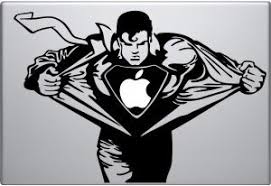 Laurence D. Fink, the 65-year-old founder and CEO of investment firm BlackRock is aligned with Millennials and Gen Z’ers. Those cohorts are known for choosing brands not only for their tangible and emotional value, but for what they actually do for the world.
Laurence D. Fink, the 65-year-old founder and CEO of investment firm BlackRock is aligned with Millennials and Gen Z’ers. Those cohorts are known for choosing brands not only for their tangible and emotional value, but for what they actually do for the world.
It’s why a brand like Stella Artois is spending millions of dollars to partner with Matt Damon’s Water.org to deliver clean tap water to millions of people in developing countries, and supporting that effort with a Super Bowl spot. Are the people at A-B InBev altruists? Or are they making a cold, calculated investment to curry favor with potential beer drinkers?
Does it matter? If we judge them solely by their actions and not their motivations, they are doing the right thing. And by doing the right thing their reputation and business should prosper.
Many brands and their parent companies have understood this for a long time. Cigarette maker Phillip Morris hoped it could atone for its sins by supporting feminism (in its own strange way) and being a generous patron of the arts. On the other end of the spectrum, much loved brands are proactive supporters of positive social change. Starbucks, for example, has invested in a wide range of issues including sustainability, community and education.
Now, a New York Times article describes a stunning letter in which Fink “inform(s) business leaders that their companies need to do more than make profits — they need to contribute to society as well if they want to receive the support of BlackRock.”
Again, whether its motivation is purely philanthropic or mercenary is beside the point. Blackrock has put businesses in need of investment on notice. Which got me to thinking, just how much good can (and should) a company do? What percentage – if any – of profit and stock price need to be sacrificed in this effort?
Let’s put this in perspective.
My hometown of Los Angeles has a serious homelessness problem. Last May, the Los Angeles Times ran an article with the headline, L.A. County homelessness jumps a ‘staggering’ 23% as need far outpaces housing, new count shows. There are an estimated 58,000 homeless people living on the streets here, and they’re not hard to spot. When my friend and I drove downtown to see an L.A. Kings hockey game on MLK Day, we couldn’t help but talk about the alarming frequency with which “tent city” after ten city appeared on the sides of the freeway, under overpasses, and sometimes just out in the middle of the city streets. It was not the uplifting message we needed on this holiday. This, without driving past downtown L.A.’s infamous skid row.
A comprehensive homelessness strategy document compiled by Los Angeles City Administrative Officer Miguel Santana and Chief Legislative Analyst Sharon Tso, states that solving this problem will require an incredible $1.85 billion.
But “incredible” is all relative.
The recent Tax Reform approved by Congress will benefit some well-known brands quite handsomely. One of those brands, everyone’s darling, including mine, is Apple.
Fortune estimates Apple “may see up to $47 billion removed from its tax bill.” And it’s not like the company isn’t printing cash already. In the fiscal year ending September 30, 2017, Apple reported net income (profit) of $48 billion.
So, for about 4% of Apple’s tax savings or annual profit (take your pick), homelessness could be wiped out in the largest city in their home state.
Of course, Apple didn’t cause homelessness, nor is it their problem, per se. It’s a crisis we all share. We the people represented by our state, local and federal governments, should be the entities collecting enough revenue to implement and pay for a solution, not a corporation.
But this is the world we live in. Apple gets a $47 billion tax break and people live on the streets.
So how about it Apple? Why not spend a single-digit of your tax break or profits to really make a difference? Yes, your stock will take a short-term hit and your investors will suffer. But they won’t be sleeping on the streets. Maybe a couple of billion for L.A. this year, a couple of billion for San Francisco next, and San Diego the year after that. All of California can be Golden, and you’d be the one who made it that way.
Pretty good advertising, right?



